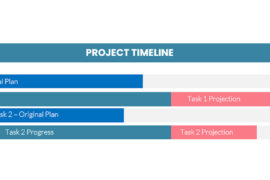Project Management tools are fundamentally either analysis based or commitment based. Which one is right for you?
When we talk about Project Management Systems, it used to be that we were only talking about Critical Path Methodology Programs. These are programs, which are primarily scheduling tools. These days, we could be talking about any number of categories of software in the project management arena.
I’ll not start trying to mention all the different categories of tools that are referred to as project management software but attendees at the annual PMI Symposium can get a feel for the diversity from the plethora of vendors in the exhibit area.
If we are talking about project planning or the management of a project that is underway, pm tools are going to fall into one of two major categories.
Analysis tools
The first includes all analysis tools. This includes most of the popular planning and scheduling systems that can be found on virtually every project manager’s desktop around the world. Analysis tools such as CPM schedulers can be very important. We need very little information to make their analysis engines work. Fundamentally a task identifier, a duration and a logical sequence are enough to get a critical path schedule showing the earliest and latest dates when tasks will logically occur without affecting the targeted end date.
As important as this is, it is key to remember that this method of planning was designed over 50 years ago specifically for projects that were huge, where there was only one of them at a time and where resources were considered to be unlimited. It goes without saying that most project environments now are not like that.
Still, it is no doubt important to see what the logical sequence of events should be regardless of how many projects are involved and, perhaps when many project depend on each other for resources or through interdependencies, then the logical sequence of tasks becomes even more important and certainly the calculated analysis of the schedule becomes key.
Commitment tools
It’s perhaps a strange term for a category of project management tool and I don’t know of anyone else using it but the category is real enough. Imagine that instead of analyzing when a task should happen, you simply commit to doing something. An agenda is a commitment tool. Even if you are only making promises to yourself, you have made a commitment. You enter something you promise to do and when it’s due to be completed. If the promise involves someone else, you usually mark that down too. Adding an issue to an issue management system, is using a commitment tool.
Ok, you say, but I don’t use the analysis feature of my scheduling package, I simply drag the activity bar to its desired location, isn’t it now a commitment tool? No. You are using a tool, which has as its core design feature an analysis engine and you are trying to use that tool to track commitments. The problem is, unlike your agenda or, better yet, a project issue manager; an analytical tool is not designed to track your promises and your success or failure to meet them. Don’t believe me? Trying changing the status date or time now for a project in most schedulers and watch the bars magically move forward to today, thus changing your promise automatically.
There are many project management tools on the market now, which are not analysis oriented, and they are finding an important niche in a wide range of organizations.
Can’t I have both?
But can’t you use both types at once? Can’t you mix commitments and analysis at the same time into one tool?
A number of vendors are trying but the mixture of these two types of data has the potential for enormous mischief. The problem is that the data looks almost identical. If a scheduling algorithm shows a task identifier, a description and some dates, how does one tell that from a task that has been promised for that date regardless of whether the analyzer says so or not? Yes, you can mix data from different systems, but trying to mix data from an analysis engine all the way down to your daily agenda is rarely successful. Software has been made to try it before from the largest vendors around and while it can work technically, the data doesn’t hold well together practically.
So what should I choose?
You shouldn’t be faced with a huge choice her to abandon one tool type or another. While the data doesn’t merge together well for practical purposes, you can still get tremendous benefits from seeing and using both when used distinctly. The trend in new tools is definitely away from analytical tools and more towards commitment based systems. In order to be efficient, you’ve just got to make sure you interact with each type appropriately.





